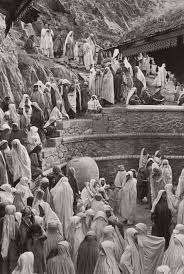Peace Watch » Editor's Take, Memeiors » Prison Tales: Our Spring Pastimes
Prison Tales: Our Spring Pastimes
Nostalgia
Our Spring Pastimes
ZGM
‘Some birds are not meant to be caged’, that is how best I can pronounce childhood of my mates, siblings and myself. When spring ‘dressed in all its trim, put a spirit of youth in everything’ like swallows in wee hours we flew out of our homes as arrows from a quiver. Nothing could hold us back. The fright of standing on a stool in class or receiving a cane charge on our palms for incomplete homework could not pin us to our reading desks.
The rash of almond blossoms at the foothills of the hillock attracted us like honey bees to Devi Anagan, the compound of Sharika Bhagwati, one of presiding deities for my teachers Shamboo Nath, Arjan Nath and others. Once in a year some of them visited the temple of the goddess with unique offering ‘Taher Charvan’, – rice boiled with turmeric, oil and salt mixed with cooked liver of goat for pleasing the goddess. ‘Taher’ spoke of cultural bondage between Kashmiri Hindus and Muslims. For seeking God’s blessings, Muslims also cooked Taher, but it was not prepared with goats’ liver. It was distributed on a tramee big copper platter distributed amongst the devotees at mausoleums of native saint Hazrat Sultan Sheikh Hamza Makdoomi and Hazrat Sheikh Bahauddin Gunj Baksh.

The month-long almond blossom festival at the tail end of the hillock used to be a grand pageant with tattoo makers from Punjab squatting on both the sides of the dusty road, magicians performing tricks to big crowds and children waiting for enjoying a ride on manually driven roller coasters on the sides of the main venue adjacent to Sangeen Darwaza, second main entrance to Badamwari on the Western front. Like many other children besides enjoying eating water chestnuts roasted in a high-quality grass under the canopy of almond trees and making garlands out of fallen petals we had few other pastimes, one of them was looking for thrush birds- and catching this singing bird was a dream for my younger sibling Hassan, my mates and me. For caging a thrush bird, preparations started one or two days before the Sunday. It started with purchasing of a long reed for one or two annas for making a Chookhabur- (noose trap). Making this device in itself was an enterprising job. The bold among us would pull out a long hair from the tail of a standing horse at Nowhatta Tonga Adda for making a noose. The noose was tied with cobbler’s thread to the most tapering side of the reed. Cobbler’s thread was known for its strength. Armed with Chookhabur, like soldiers in enemy territory we stealthily and silently walked into almond orchards in morning hours and tried to put noose into necks of many thrush perching on almond trees but hardly we ever had the luck of getting a singing bird.
Going up the hill, for entering into the nineteenth-century fort atop was a passion with almost all children in our generation. The fort was opened to the public on two days during almond blossom celebrations and on some Hindu festivals. For us, the fortress was as mysterious as the legend about the hillock. For having heard stories, cannons were fired three times in a day; at dawn, noon time and dusk and the country’s flag was hoisted on the skyscraping mast at sunrise and pulled down at sunset had aroused curiosity in us to know what was inside the magnificent architecture. More than anything it was stories associated with the fort that increased inquisitiveness in us about the fort; some stories like the last Sikh Governor Sheikh Imam-u-Din fighting ditched battle against the soldiers of Gulab Singh in the Hari Parbat Cantonment and defeating his soldiers, with leftover three hundred soldiers also surrendering having passed on from generation to generation were part of folk tales. Some agonizing stories, some of the course blend of fact and fiction about brutalities inflicted on people and leaders were breastfed to us. For these stories, the fort in our imagination was an emblem of oppression, terror and intimidation in the centre of the city. Most of us believed stories like that one of our leaders during his incarceration had been made for dipping his fingers in boiling oil as gospel truth. There might have been an element of exaggeration in these stories. Nonetheless, the fort after 1846, was most gloomy dungeon worst than infamed Bastille of France. So terrifying was the dungeon of Hari Parbat even an idea sent shivers down the spine of some European travellers like E.F. Knight, author of ‘Where Three Empires Meet’.
On a couple of occasions, after vying our way through the small entry inside the fort, like a man after an earthquake rummaging through debris for something precious we searched in ruins our horrifying history and walked away from the fort with some old cannon as souvenir back to the orchard, for enjoying some more hot water nuts.
Filed under: Editor's Take, Memeiors







